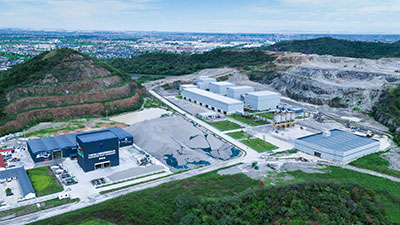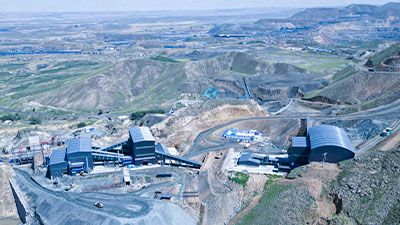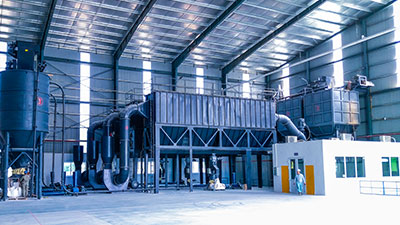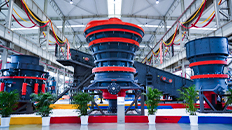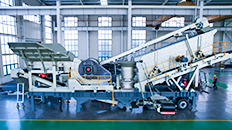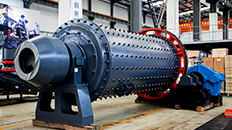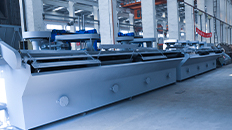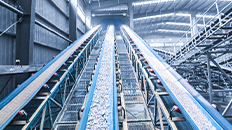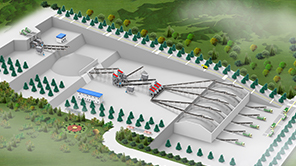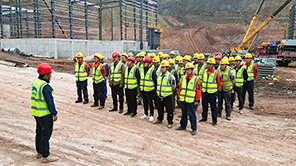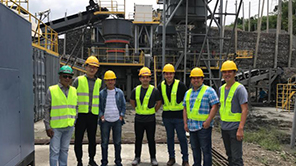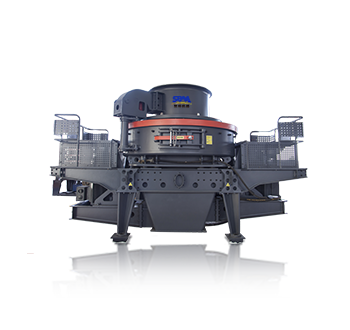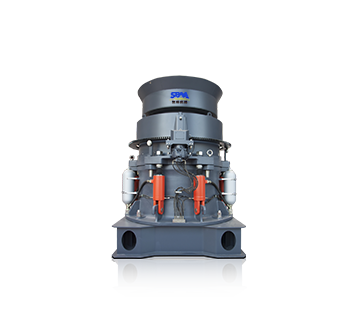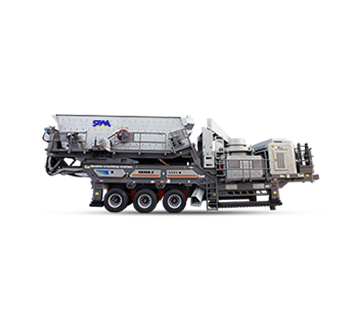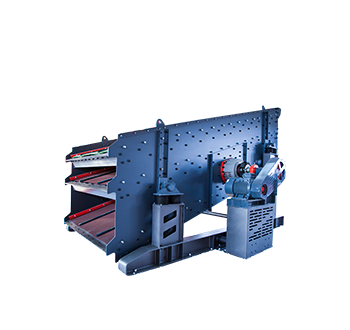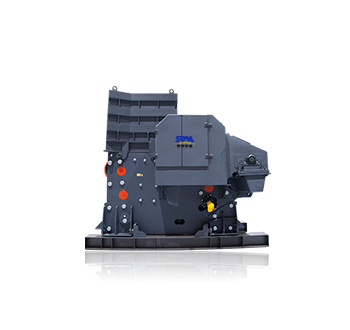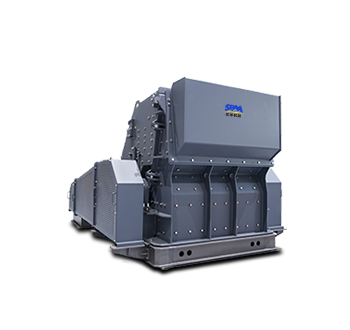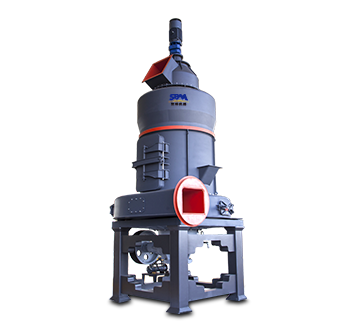Summary:The main part of the material grinding of Raymond mill occurs on the cylinder of horizontal low-speed rotation. While the material is crushed and ground by impact, the material itself at the feeding end and the discharging end has a poor material surface height
The main part of the material grinding of Raymond mill occurs on the cylinder of horizontal low-speed rotation. While the material is crushed and ground by impact, the material itself at the feeding end and the discharging end has a poor material surface height, which makes the material flow slowly from the feeding end to the discharging end and completes the grinding operation. When the cylinder is driven by the transmission device to rotate, the grinding body is attached to the lining surface of the inner wall of the Raymond mill barrel to rotate with it due to inertial centrifugal force, and is brought to a certain height and then falls freely by gravity. At this time, the abrasive body will crush the material in the cylinder. At the same time, the abrasive body in the rotating Raymond mill will not only rise and fall, but also produce sliding and rolling, resulting in the abrasive effect between the abrasive body, lining plate and the abrasive material to make the material fine.
Obviously, when the Raymond mill is in normal operation, the motion state of the grinding body has a great influence on the grinding effect of the material. The abrasive body which can be brought to a higher place by Raymond mill and fallen like a projectile has a strong impact crushing ability to materials because of its high kinetic energy; it can not be brought to a higher place by Raymond mill and slides down with materials, so it has a strong grinding ability to materials. The motion state of the grinding body in a Raymond mill is usually related to the speed of the mill, the amount of material in the mill and the quality of the grinding body. When the cylinder has different rotational speeds, the grinding body will have three kinds of motion states:
- 1. When the cylinder speed is moderate, the abrasive body is raised to a certain height and thrown down, showing a "throwing motion state". At this time, the abrasive body has a greater impact and grinding effect on the material, and the grinding effect is better.
- 2. When the cylinder speed is too low, the abrasive body can not be brought to a higher height. The abrasive body and material will slide down because of the gravity action, showing a "dumping motion state", which has little impact on the material and almost only plays a role in abrasion, so the grinding effect is not good and the production capacity is reduced.
- 3. When the cylinder speed is too high, because the inertial centrifugal force is greater than the gravity of the grinding body itself, the grinding body and material are attached to the inner wall of the cylinder and rotate together with the cylinder without falling, showing a "circumferential motion state". The abrasive body has no impact and abrasive effect on the material.
In the cylinder of Raymond mill, the less the number of grinding body is loaded and the higher the rotational speed of the cylinder, the smaller the rolling and sliding of the grinding body and the smaller the grinding effect on the material. When the number of abrasives is large, the abrasives distributed near the center of the cylinder cross section are not enough to form projectile motion. It produces more rolling and sliding, which results in the fine grinding of materials. Therefore, when grinding materials with larger or harder particle size, the average size of the grinding body is larger and the quantity of filling is less, so as to ensure that the grinding body has sufficient projection landing height and strengthen the impact crushing effect. On the contrary, when grinding small or easy-to-grind materials, the average size of the grinding body can be smaller, but the amount of filling should be more, which will strengthen the grinding effect.

